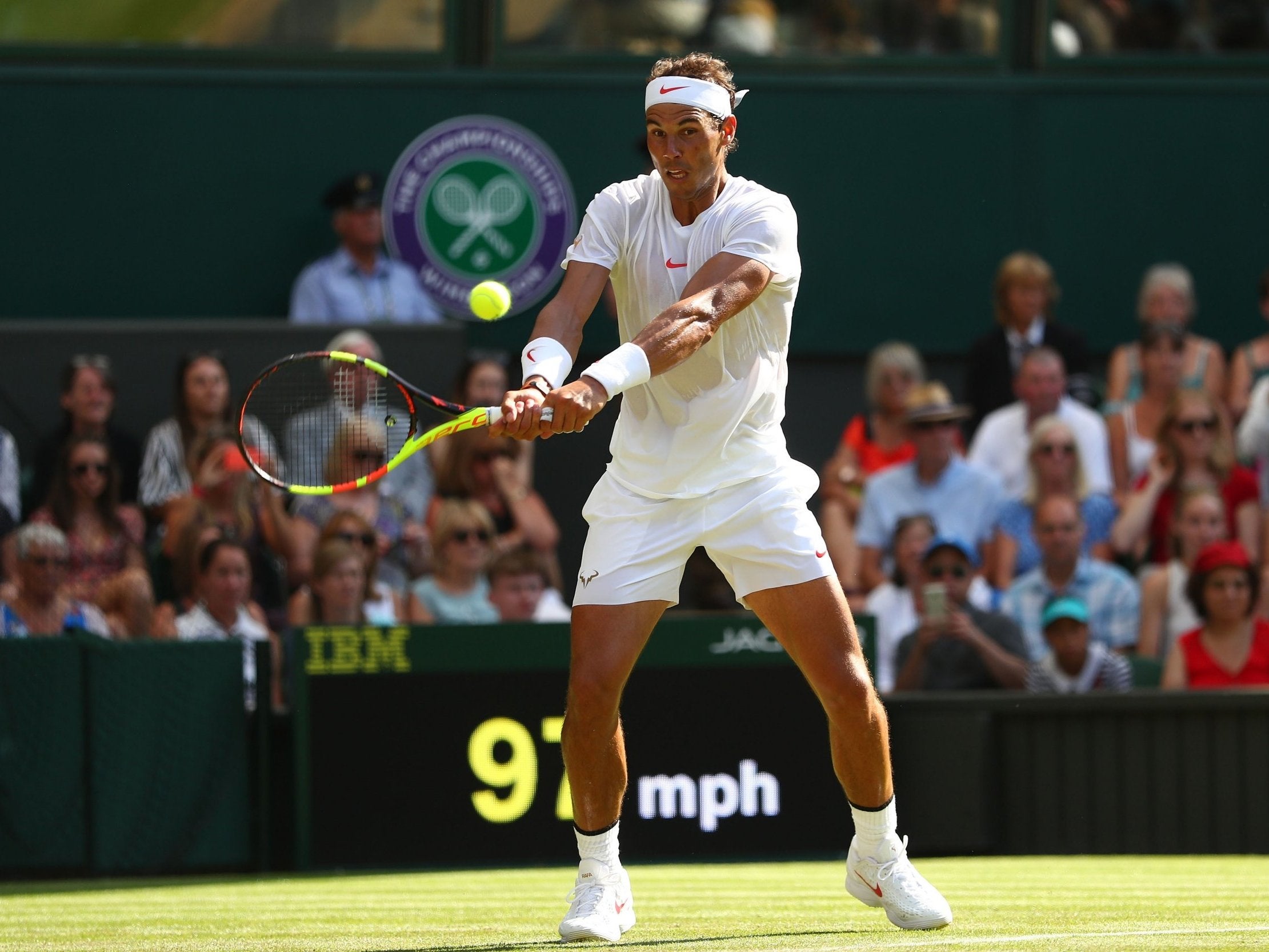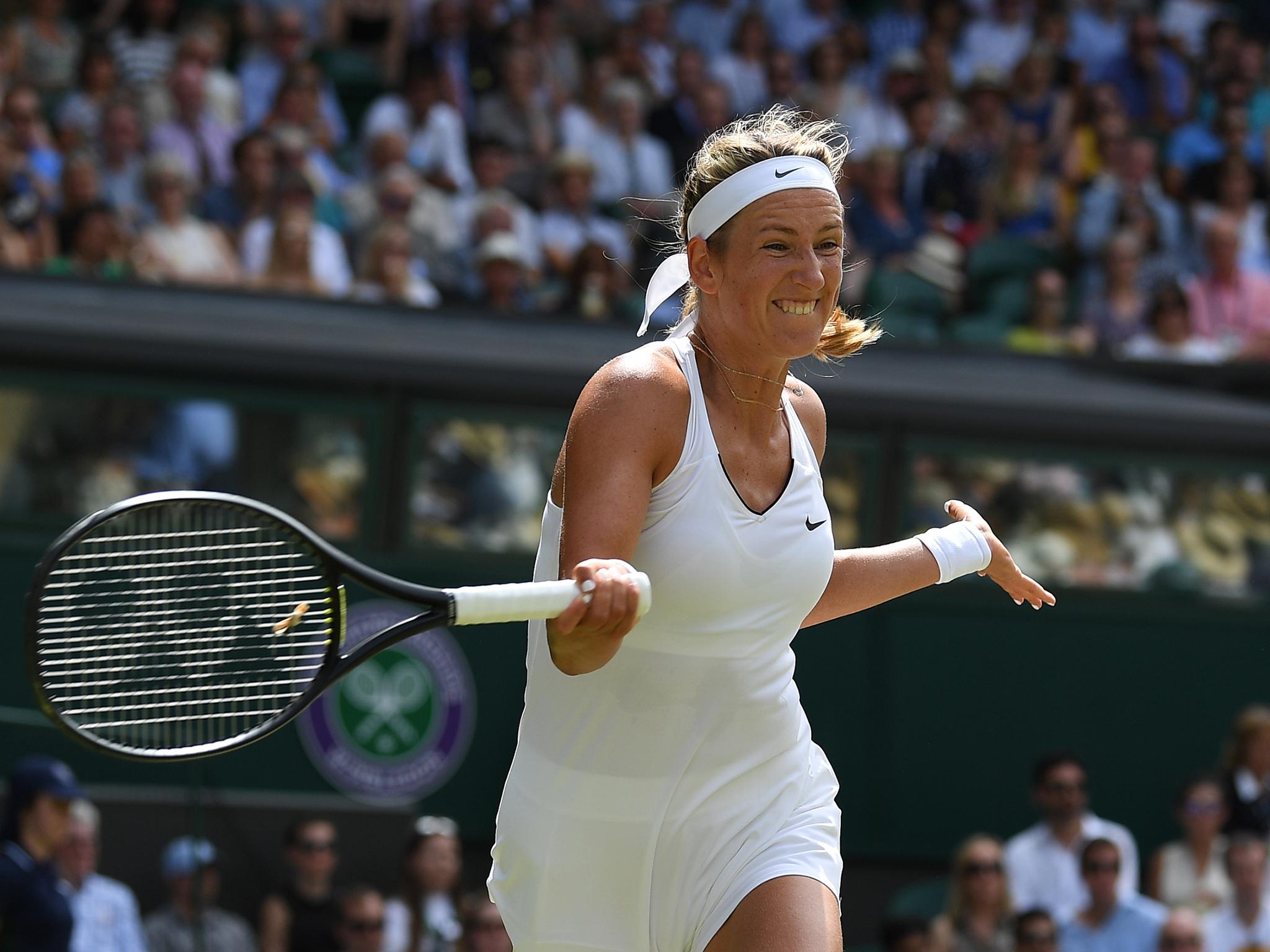Wimbledon 2018: Rafael Nadal brings own inimitable style to grass-court season and will rival Roger Federer
Watching Nadal beat Dudi Sela in the first round was a reminder of how Nadal defies conventional wisdom about playing on grass, writes legendary tennis coach Nick Bollettieri

Your support helps us to tell the story
From reproductive rights to climate change to Big Tech, The Independent is on the ground when the story is developing. Whether it's investigating the financials of Elon Musk's pro-Trump PAC or producing our latest documentary, 'The A Word', which shines a light on the American women fighting for reproductive rights, we know how important it is to parse out the facts from the messaging.
At such a critical moment in US history, we need reporters on the ground. Your donation allows us to keep sending journalists to speak to both sides of the story.
The Independent is trusted by Americans across the entire political spectrum. And unlike many other quality news outlets, we choose not to lock Americans out of our reporting and analysis with paywalls. We believe quality journalism should be available to everyone, paid for by those who can afford it.
Your support makes all the difference.If you were compiling a handbook on how to play grass-court tennis you would probably ignore Rafael Nadal, despite the fact that he’s played in five Wimbledon finals and won the title twice.
Watching Nadal beat Dudi Sela in the first round was a reminder of how Nadal defies conventional wisdom about playing on grass. Holy smoke, you might have thought he was playing on a dirt court in Madrid or Buenos Aires the way he was standing seven or eight feet behind the baseline to receive serve.
The point is that it works for Nadal. When he’s standing so far back the temptation for opponents is always to attack him, but he loves a target. He’s at his best when he’s hitting those backhand passing shots with an open stance or his devastating cross-court forehands.
Sela’s a good player – I was impressed with his backhand in particular – but he didn’t hit enough winners and needed to get in more first serves.
How far can Nadal go? Coming to Wimbledon without any grass-court matches under his belt hasn’t made his task any easier and winning his 11th French Open title last month might have taken a lot out of him.
I was particularly interested to watch Kei Nishikori’s match against Christian Harrison. Kei won in four sets, but was made to work for his victory.
Kei has been with us at the IMG Academy in Florida since he was 14. He’s been as high as No 4 in the world rankings but injuries have taken their toll in the last year or two and there was a lot of pressure on him to win this match.
If he stays healthy I think he can still get back to where he was. Movement is always the key for Kei, whose great strengths are his athleticism and his passing shots. If he’s in good shape physically he can be a danger to anyone. He’s good at the net, but he needs to get a lot of first serves in.

We still see Kei a lot at the academy, though I’m never quite sure how he’s feeling. He gives so little away that he would be a great poker player.
Wednesday’s match of the day: The pick of Wednesday’s programme is Karolina Pliskova’s match against Victoria Azarenka. Both are former world No 1s and both can play well on grass. Pliskova has played in three grass-court finals and won the title at Eastbourne last year, while Azarenka has reached two Wimbledon semi-finals.
When you look at Pliskova’s record on grass and her big game I know a lot of people are surprised that she has never gone further than the second round at Wimbledon. The trouble for some players is that they want success so badly at Wimbledon that they just try too hard. I think the mental side of it is a big thing for her, but if she could get on a bit of a run she could be very dangerous.
I have to commend Azarenka on the way she’s performed since she came back after having a baby. She’s very solid, covers the baseline extremely well and has excellent ground strokes. I think for her it’s a matter of confidence: she has to believe that she has it in her to be back among the best. I think I just give the advantage to Pliskova, but this could be a close one.

What the best players have taught me: Every day I’m recounting some of the things I’ve learned from great players I’ve worked with over the years at the IMG Academy I founded in Florida.
I remember Mary Pierce arriving in early December 1995 to begin her preparations for the following month’s Australian Open. She was with her excellent coach, Sven Groeneveld, who is a good friend of mine. Mary asked me if I would help her. Maybe I was a bit hard on her but I told her: “Yes, of course, but you’re too fat!”
Mary had tears in her eyes as she told me: “I’ll do whatever you tell me, including whatever you say about my diet.” For the next month she trained extremely hard. Holy cow, you would have thought she was preparing for a Navy SEAL mission. And guess what: she won the Australian Open.
The lesson Mary taught me was that sometimes you just have to admit that you have screwed up, but if you’re prepared to do whatever it takes you can become a winner again.
And what I can teach you: my daily tip today is about how to avoid getting passed at the net. This is particularly relevant as you’ll see more players coming to the net on grass than on other surfaces.
Ironically enough you can leave yourself more vulnerable the harder you hit your approach, unless your shot placement is spot-on. Because the ball is reaching your opponent more quickly, you might not be giving yourself enough time to get into position at the net. The best strategy is to vary the spin, speed and depth of your approach shots to stop your opponent getting into any sort of rhythm.
Be wary of approaching cross-court because this could open up the chance for your opponent to beat you with passing shots or lobs. Similarly, it’s often the best policy to put your first volley down the line rather than cross-court.
Read all about it: I’ve spent hundreds of hours in the last few months working on a new book which will be my personal account of what I’ve learned in a lifetime of coaching tennis. The Professional Tennis Registry will be publishing this later in the summer. You can find out how to buy it at www.ptrtennis.org.
Join our commenting forum
Join thought-provoking conversations, follow other Independent readers and see their replies
Comments